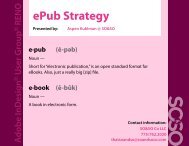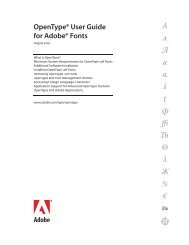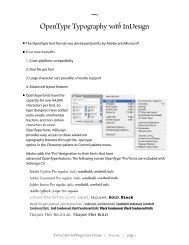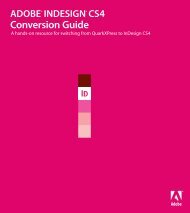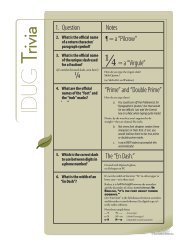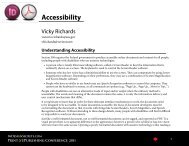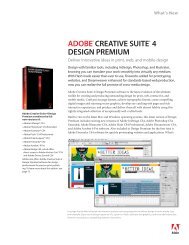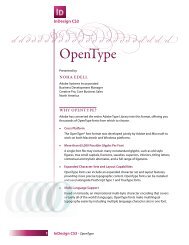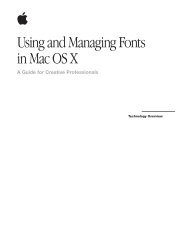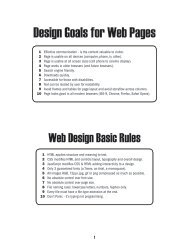Quark to InDesignCS3 Conversion Guide - InDesign User Group
Quark to InDesignCS3 Conversion Guide - InDesign User Group
Quark to InDesignCS3 Conversion Guide - InDesign User Group
Create successful ePaper yourself
Turn your PDF publications into a flip-book with our unique Google optimized e-Paper software.
lists from text files for these dictionaries,<br />
and you can export dictionaries<br />
as text files.<br />
Can <strong>InDesign</strong> import word files?<br />
<strong>InDesign</strong> offers robust support for<br />
both Word and Rich Text format<br />
(RTF) files. For example, when you<br />
import a Word document or an RTF<br />
document, you have the option <strong>to</strong><br />
rename styles (in case of a naming<br />
conflict), overwrite an existing<br />
<strong>InDesign</strong> style with the Word or<br />
RTF style, or map a Word or RTF<br />
style <strong>to</strong> an existing <strong>InDesign</strong> style.<br />
To access these style-mapping<br />
options, as well as several other<br />
options, choose File > Place, select<br />
a Word or RTF file, and then select<br />
Show Import Options in the Place<br />
dialog box. When you click Open,<br />
the Microsoft Word Import Options<br />
dialog box is displayed.<br />
In addition <strong>to</strong> setting style-mapping<br />
rules when importing Word<br />
documents, you can also save the<br />
settings you make in the Microsoft<br />
Word Import Options dialog box as<br />
presets. For example, if you receive<br />
Word files from several writers who<br />
use their own idiosyncratic styles,<br />
you can set up presets that au<strong>to</strong>matically<br />
map those styles <strong>to</strong> your<br />
<strong>InDesign</strong> styles on import—a huge<br />
time-saver and extremely useful<br />
for book, newspaper, and<br />
magazine publishers.<br />
B<br />
A<br />
A. Closely control how <strong>InDesign</strong><br />
imports microsoft word files.<br />
B. for example, map styles in the<br />
word file <strong>to</strong> styles in an <strong>InDesign</strong><br />
layout.<br />
C. Even save those style mappings<br />
as presets <strong>to</strong> streamline future<br />
import of similar content.<br />
D. when you import the word file,<br />
<strong>InDesign</strong> au<strong>to</strong>matically applies<br />
the mapped styles, so you get<br />
more finished results, like the<br />
page shown here.<br />
<strong>InDesign</strong> retains anchored objects<br />
in Word files. They are placed in<br />
<strong>InDesign</strong> using the original Word<br />
dimensions and similar position coordinates<br />
on the page. After you import<br />
an anchored object, you can control its<br />
placement within <strong>InDesign</strong> by selecting<br />
it and then choosing Object ><br />
Anchored Object > Options.<br />
C<br />
D<br />
Text and Typography 39





